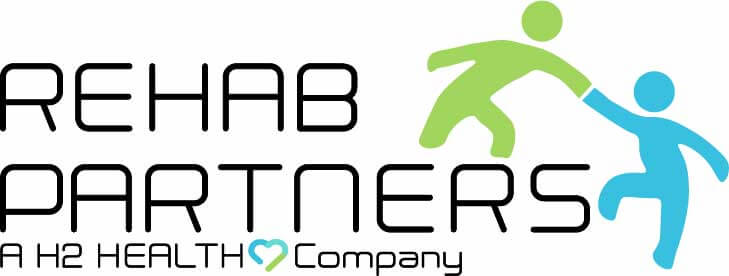
Physical therapy is an important part of the healing process after being injured or having surgery. However, most people don’t know that there is physical therapy specifically designed for children. Pediatric physical therapy can help improve a child’s physical abilities and motor skills, as well as their overall quality of life.
Physical therapy can also help children recover from overuse injuries, and to teach them alternative movements in order to prevent further injury. Let’s discuss what pediatric physical therapy is, what conditions it treats, and how parents can help their children get the most out of physical therapy sessions.
What Is Pediatric Physical Therapy?
Pediatric physical therapists have specialized training in the developing body of a child and in conditions that affect bones and muscles as they grow. These specialized physical therapists also are great with kids and know how to help keep them engaged while working through their exercises. It can help improve their physical abilities and motor skills, as well as help them recover from overuse injury or surgery.
How Does Pediatric Physical Therapy Help Children?
Recovery from Acute Injury
Pediatric physical therapy is an important part of proper healing after a child experiences an acute, or sudden, injury to the bones or muscles. Common injuries children experience are overuse injuries, in which a muscle becomes very sore when used repetitively.
For instance, kids who play soccer can develop overuse injuries in their legs from lots of running without taking adequate breaks. Another common injury in children, especially in those playing sports, is an ACL (anterior cruciate ligament) tear. This happens when they tear connective tissue in their knee, and it usually needs to be surgically repaired.
Surgery and rest can be critical parts of healing after a child sustains an acute injury, but during the recovery time, muscle tissue can weaken due to lack of usage. Pediatric physical therapy helps a child to strengthen their muscles back to their pre-surgery or pre-injury strength, and teaches your child how to avoid re-injury in the future.
Pediatric physical therapists employ the same strategies they use with adults who have musculoskeletal injuries, but they also use strategies to keep your child interested and motivated during the therapy session – such as by making a game out of the exercises they need to complete, or giving them a prize or treat at the end of the session.
Pediatric physical therapy helps kids recover from injury or surgery by helping to relieve pain, to strengthen muscles, and to teach them exercises they can continue doing at home on their own. The therapist will help a child how to keep their pain under control without addictive pain-relief drugs, and to continue to strengthen their muscles as they return to sports/physical activity.
Recovery from Chronic Illness
Physical therapy is important for more than just sudden injuries or surgery. Pediatric physical therapy is a key part of the treatment process for children who have developmental delays or disabilities, such as cerebral palsy, autism spectrum disorder, or muscular dystrophy. These conditions affect a child’s ability to coordinate movement and interact with the world.
For example, children with muscular dystrophy have trouble doing daily life functions, like getting dressed or using utensils, because muscular dystrophy weakens the muscles. For these children, pediatric physical therapy is critical for strengthening their muscles and helping them gain more independence from caretakers by being able to take care of themselves. This makes pediatric physical therapy important for their mental health as well as their physical health.
During pediatric physical therapy sessions, the therapist will lead your child through exercises that will help to improve their motor skills, physical abilities, and anything they may be struggling with related to their condition. The goal of physical therapy is to improve your child’s quality of life and relieve any pain they may be experiencing.
Learning Appropriate Crawling and Movement Behaviors
If your baby is crawling in an unusual way and not in the typical way in which babies usually crawl around, then a pediatric physical therapist can help teach your baby how to crawl properly so that the right muscles are getting stronger. People often don’t appreciate the importance of crawling in babies, but it is indeed how your baby is gaining strength in all of their arm muscles and leg muscles.
There are certain developmental milestones that a baby should go through to build a healthy body.
How Can I Help My Child Get the Most Out of Pediatric Physical Therapy?
Parents can help their children get the maximum benefit from their pediatric physical therapy sessions by ensuring their child is well-rested and fed before each session, coming to the session prepared with any necessary items (e.g., water, snacks, toys), and staying positive and upbeat during each session.
It is also important for parents to continue practicing any exercises or activities their child is supposed to do at home between sessions. Perform the exercises along with your child, and do not criticize them – make it fun. If your child is having difficulty with a particular exercise, talk to the pediatric physical therapist about ways you can help the child overcome any issues.
Pediatric Physical Therapy Near Me
Here at H2 Health, our pediatric physical therapists are committed to the highest standard of care, and helping your child live their fullest life possible. All of our physical therapists hold graduate degrees in physical therapy, and they know how to create individualized treatment plans for each of our patients.
We conduct complimentary pediatric assessments, and we can help you ensure that your child is developing in all the ways necessary for them to become a healthy adult.
Contact us today to schedule an appointment by calling us at (800) 699-9395 or by filling out our request an appointment form here. We look forward to serving your family!





































